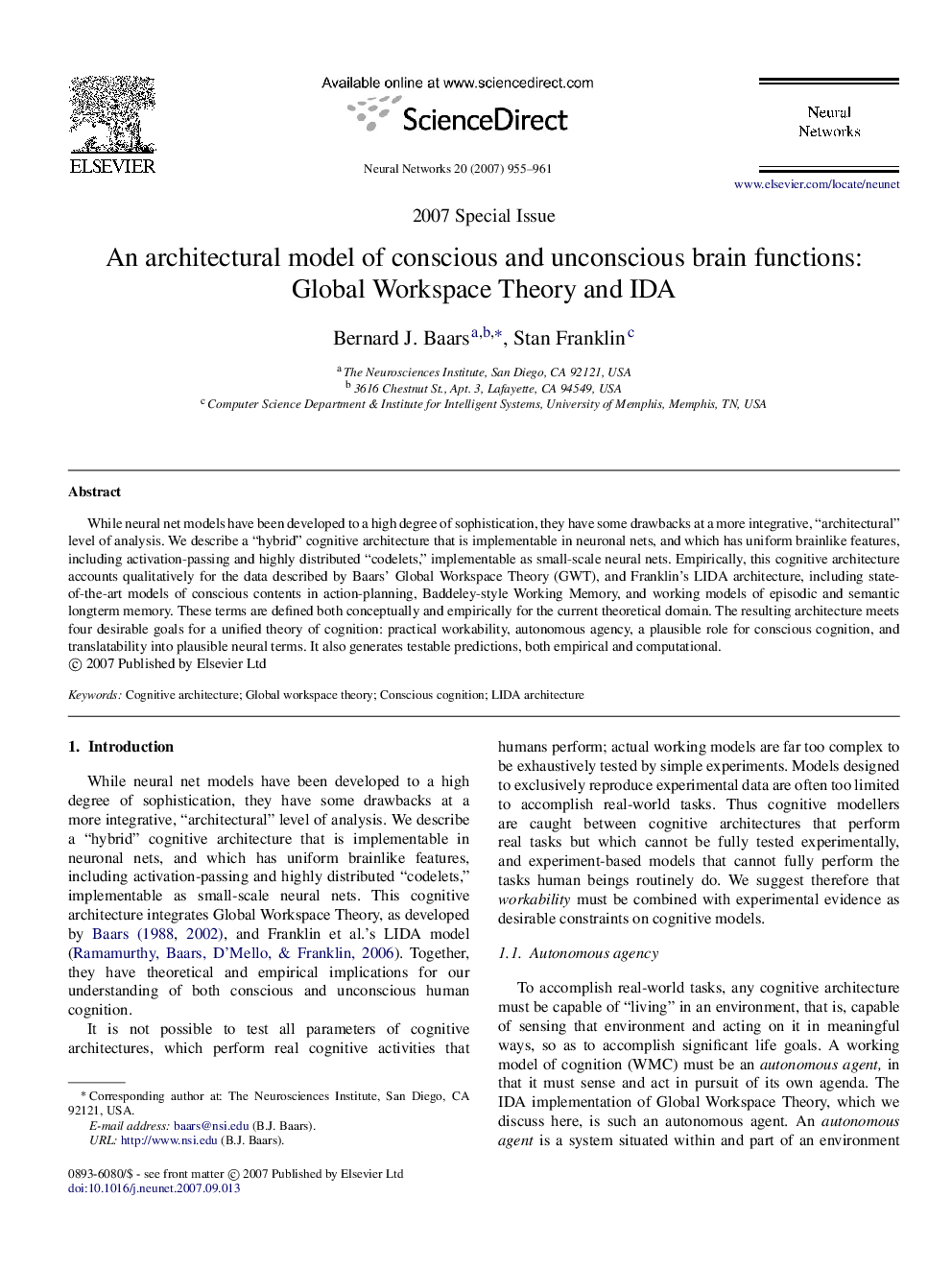| Article ID | Journal | Published Year | Pages | File Type |
|---|---|---|---|---|
| 404734 | Neural Networks | 2007 | 7 Pages |
While neural net models have been developed to a high degree of sophistication, they have some drawbacks at a more integrative, “architectural” level of analysis. We describe a “hybrid” cognitive architecture that is implementable in neuronal nets, and which has uniform brainlike features, including activation-passing and highly distributed “codelets,” implementable as small-scale neural nets. Empirically, this cognitive architecture accounts qualitatively for the data described by Baars’ Global Workspace Theory (GWT), and Franklin’s LIDA architecture, including state-of-the-art models of conscious contents in action-planning, Baddeley-style Working Memory, and working models of episodic and semantic longterm memory. These terms are defined both conceptually and empirically for the current theoretical domain. The resulting architecture meets four desirable goals for a unified theory of cognition: practical workability, autonomous agency, a plausible role for conscious cognition, and translatability into plausible neural terms. It also generates testable predictions, both empirical and computational.
